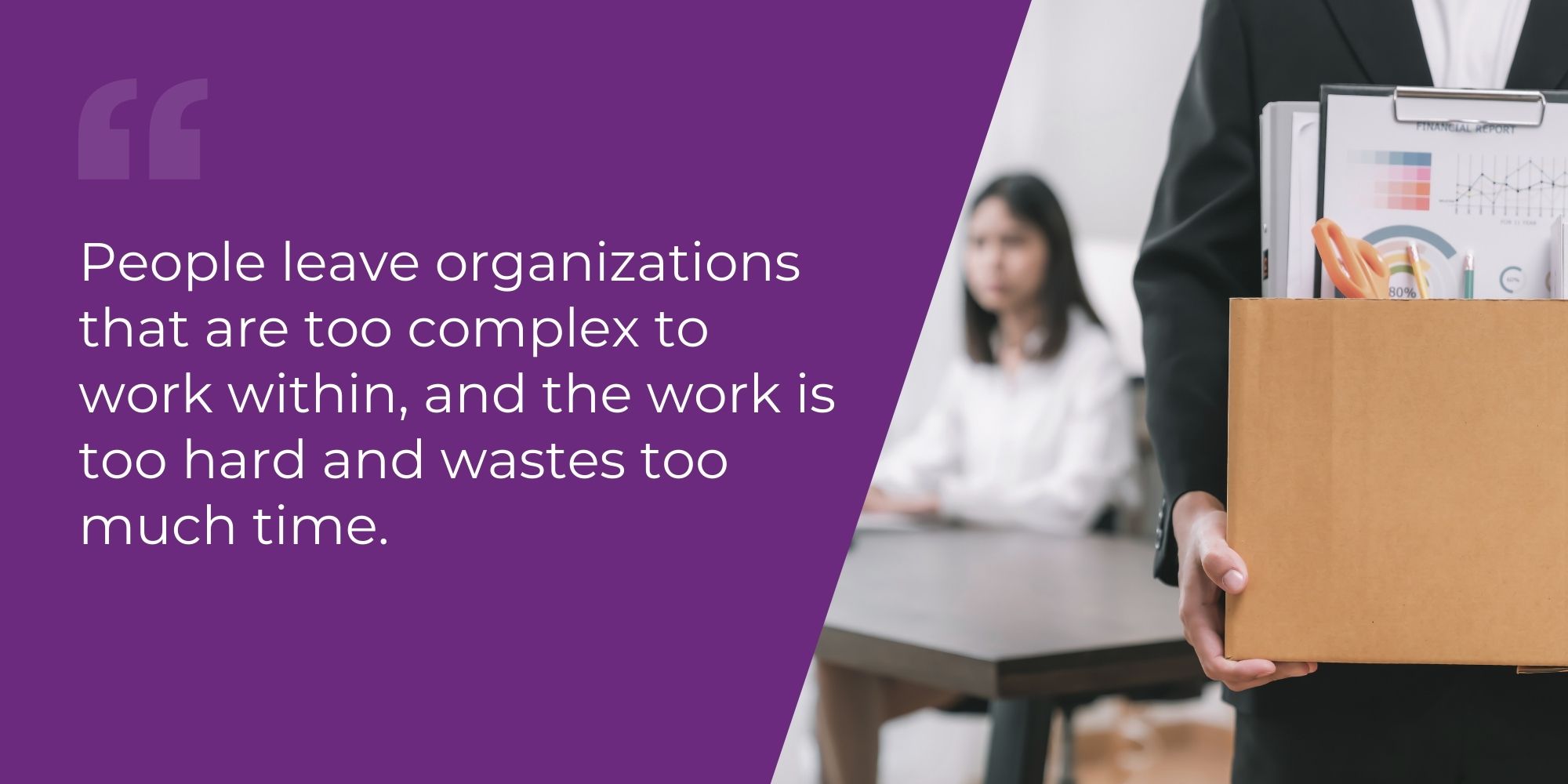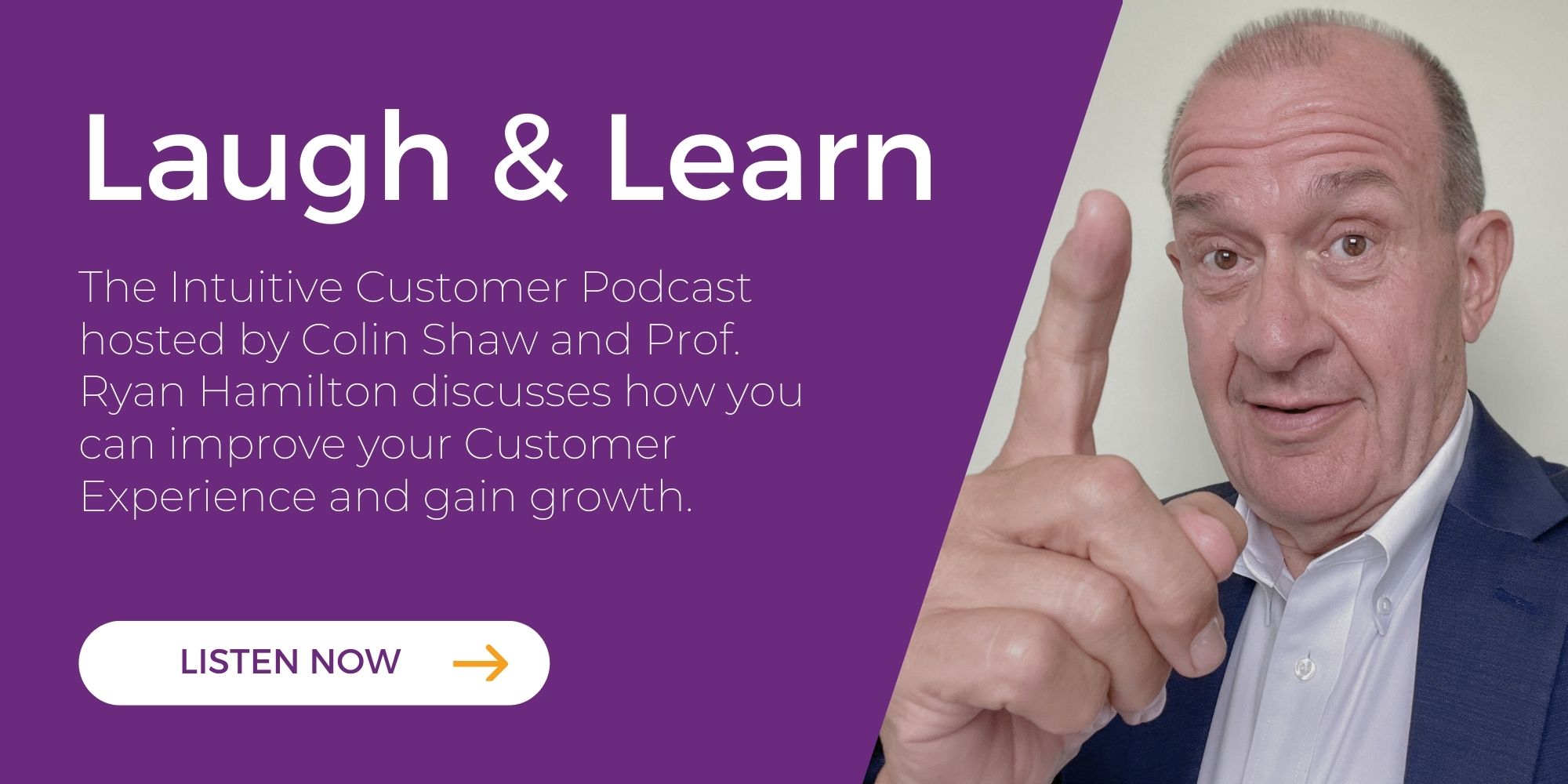Listen to the podcast:
So, you know that friction in a Customer Experience is bad. But have you also considered what friction means to an Employee Experience? I’ll give you a hint: it’s also bad.
Christophe Martel, founder and CEO of FOUNT, an organization that eliminates workplace friction, does think about it, and we had him as a guest on our podcast. Realizing that many of you face workplace friction in your organization, I am also sharing his insights here.
Frictionless as a concept in Customer Experience is practically intuitive and an area of priority for many customer-focused organizations. However, we don’t always have the same emphasis on eliminating friction for employees.
This attitude often results in messy interactions that put associates in a bad position, leading them to apologize to the customer for the inconvenience. It happens on retail floors when the associate can’t find what they need to provide customer service. It occurs in many ways at healthcare facilities and becomes a problem for the nursing staff. It also happens in call centers as agents click between screens and type furiously while the customer waits.

So, What is Work Friction?
Work friction is when employees feel like the company makes it harder than it should be for employees to do their jobs. It’s the stuff that gets in employees’ way that shouldn’t.
It can be difficult to pinpoint friction because tolerances for friction differ between people. It is not one-size-fits-all. What friction is becomes an ever-changing subjective definition depending on who you are, where you live, and what you do for a living.
FOUNT focuses on structural friction. Some examples of this type of structural friction are difficulties with intra-company team collaboration, a lack of established rules of engagement, and no systems for settling disagreements between co-workers, among others.
Martel says that work friction is a relatively new field. People study organizational friction, but work friction from the employee perspective is a different beast. For example, organizational friction makes a company slower through processes that are not fast or by giving their teams inadequate tech. By contrast, work friction has more acute symptoms, usually experienced by the frontline employees, and is typically the result of another department’s need to achieve a KPI (key performance indicator).
It’s also usually not intentional. People who don’t work with customers directly don’t realize how policy changes or new input requirements that help their department meet their goals can also complicate the interaction with customers at the frontline employee level.
Worse, when work friction is addressed, the attempted solutions are often not the right ones, or they don’t fix the right problems. If you don’t understand the source of the work friction and the causes of it, it becomes challenging to solve. Then, the proposed solution to the problem one doesn’t fully understand may or may not work. Or, it might work a little bit, but it creates a new problem.
Work friction is usually the result of a complex ecosystem. Therefore, to fix any of it, one has to have a clear understanding of its causes.
However, solving work friction is a worthy effort. Improving the experience leads to happy customers, and resolving work friction results in happy and engaged employees. Per Martel, what’s even better is that there is often an operational benefit to resolving work friction. By making it easier, your happy and engaged employees can now do their chosen jobs, making them more productive, efficient, and profitable.

Productive Employees Are Long-Term Employees
Martel thinks the adage “People don’t leave organizations; they leave managers” is nonsense. People leave organizations that are too complex to work within, and the work is too hard and wastes too much time. In other words, they leave because of work friction.
Traditionally, Martel says, managers are the ones who absorb friction for their employees. It’s the manager that employees go to when they can’t do something, or the employees have a tool that isn’t working for them.
However, the manager often isn’t able to solve the problem. The systems in question aren’t the manager’s choice, nor does the manager have the authority to change them. So, the friction remains because the person feeling it can’t fix it and the people who can fix it don’t know there is friction.
Martel says a lot of friction also becomes anchored into company processes. The frictional element becomes a mainstay of company management, even if everyone involved recognizes that it doesn’t work. However, if there is no data to prove it doesn’t work, it often remains.
To combat this problem, Martel’s organization has developed a way to collect data about employee tasks. By deeply diving into each task, FOUNT discovers what friction the employee encounters. Then, the organization can use the data FOUNT uncovers to solve it.
Martel says that his company approaches removing friction by creating a culture brand. They use the data they uncover to change the work culture, making it more inclusive and comprehensive down to the micro-interaction level. By making these culture changes, employees can be more productive, and employees who feel empowered to be productive enjoy their work more and stay longer at the company.
In other words, Martel says that using super sharp data to show the people who otherwise don’t see how their systems create friction for their customer-facing coworkers helps those teams optimize the systems for their coworkers.

Can AI Solve the Problem?
My thought is that AI-driven tools could help reduce friction. The introduction of AI can create an environment of productivity and efficiency.
Martel says that AI tools might eliminate friction in some cases, but not all. It’s a user-driven tool. Therefore, if a user finds the tool useful and accelerates one of their tasks, it is working. However, if an individual does not find it useful, they won’t use it. So, in that case, it doesn’t work at all to reduce friction.
That said, Martel says many chief technology officers, or those in charge of deploying AI for customer-facing roles, are coming to FOUNT to help them understand their companies’ work friction. Then, the tech teams and managers use that information to deploy the AI appropriately to address areas where it can increase productivity.
It is a powerful use case for Martel’s team. Moreover, the evidence they have collected shows that AI tools have made a significant difference in certain contexts.

So, What Should You DO About Work Friction?
Martel thinks that open communication between frontline employees and department senior managers is a good place for any organization to start to address work friction. Asking questions about their tasks and the steps involved can illuminate where work friction exists. However, he says to remember that it might be difficult to change anything if you don’t have data to support their claims and how it affects their productivity.
We do something similar on the customer side. We sit with the customer-facing teams and see what they are doing. We also ask simple questions like, “Why are you accessing that system now?” or, “Why did you write that on that slip of paper?” When we take that information to senior teams, they are often surprised by what we uncover in this exercise.
Moreover, Martel explains that when you can show the negative effect it has on workers’ satisfaction, it has an even bigger impact. For example, suppose they can show that certain points of interaction have a customer satisfaction score by employees of twenty to thirty percent. In that case, senior managers are often motivated to fix it.
It is even more impactful when you have a dollar amount you can assign. Martel estimated that reducing work friction for an organization with 10,000 employees can recover twenty to thirty million annually.
Why so much?
That’s the amount of time they waste with friction in their work day.
Martel has worked in large companies before and has been miserable there. However, he started his business because he knew it didn’t have to be that way. Most of the time, Martel says companies don’t know how to fix it. But if they did, he believes most would.
And if it means recovering millions of dollars in lost productivity revenue, I think so, too.

This review sums it up: “The dynamic between the two hosts absolutely makes this podcast. Each brings a unique take on the topic, their own perspective, and plays off each other’s sense of humor. I come away after each episode with a feeling of joy and feeling a bit smarter”.
Listen to the podcast: https://beyondphilosophy.com/podcasts


